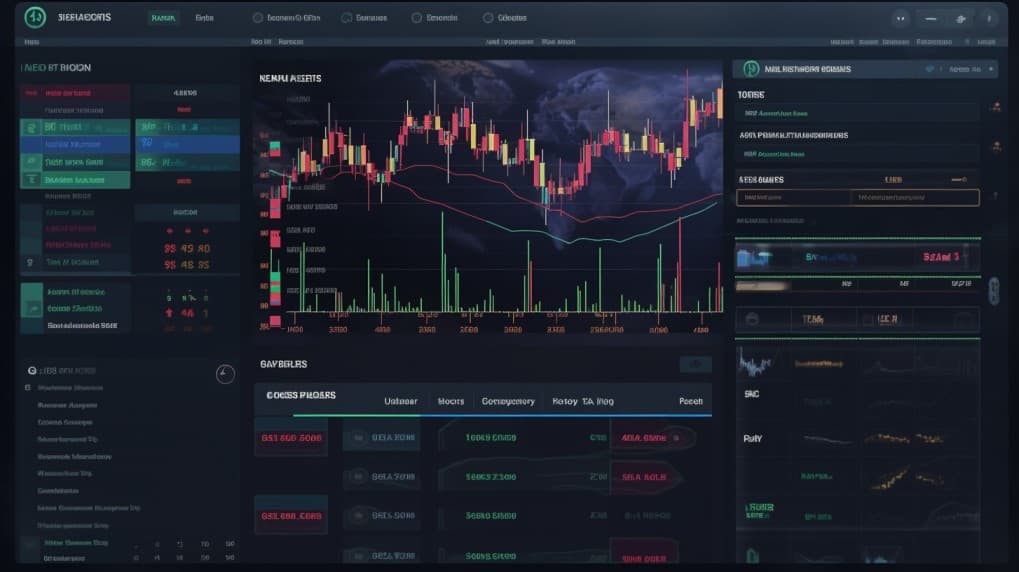
SGOL VS RING
Exchange-Traded Funds (ETFs) have transformed the landscape of investing, offering a convenient way to gain diversified exposure across a wide range of sectors and asset classes. In this article, we will delve into an in-depth comparison between two prominent ETFs: SGOL (Aberdeen Standard Physical Gold Shares ETF) and RING (iShares MSCI Global Gold Miners ETF). Through an exploration of various facets including ETF tickers, full names, issuers, sectors, top holdings, capitalization, strategy, tracking, and exposure, we aim to shed light on the distinct attributes of these two financial instruments.
SGOL Vs RING: Overview
SGOL and RING are two ETFs with contrasting investment strategies within the gold sector. SGOL is structured to track the price of physical gold, providing investors with a direct exposure to the precious metal. On the other hand, RING focuses on the global gold mining industry, investing in the stocks of companies involved in gold mining operations. The differing approaches of these ETFs result in unique risk profiles and potential returns, which we will analyze further.
SGOL Vs RING: Sectors and Top Holdings
The SGOL ETF is primarily concentrated on physical gold, making it a popular choice for investors seeking a safe-haven asset. Its main holding consists of gold bullion, giving investors direct exposure to changes in gold prices. RING, however, takes a different approach by investing in a diversified portfolio of global gold mining companies. Top holdings within RING include major players such as Newmont Corporation, Barrick Gold, and AngloGold Ashanti. By understanding the sectors and top holdings of these ETFs, investors can make more informed decisions aligned with their investment objectives.
 SGOL overlap SGOL VS RING
SGOL overlap SGOL VS RING
SGOL Vs RING: Capitalization and Strategy
The asset under management (AUM) of an ETF can often be an indicator of its popularity and investor demand. SGOL's considerable AUM reflects its attractiveness to investors seeking a direct gold investment. In contrast, RING's strategy revolves around capturing the performance of the gold mining sector, which can be influenced by factors beyond just gold prices, such as operational efficiencies and geopolitical events. Investors evaluating these ETFs should consider the differences in capitalization and strategy to align with their risk tolerance and investment goals.
SGOL Vs RING: Tracking and Exposure
SGOL achieves its objective of tracking the price of gold by holding physical gold bars in secure vaults. This direct approach provides investors with exposure to changes in the market price of gold. RING, on the other hand, tracks an index of global gold mining companies, allowing investors to access a diversified portfolio of gold-related equities. The tracking methods influence the performance of these ETFs, with SGOL closely mirroring gold price movements and RING being influenced by the broader performance of gold mining companies.
Conclusion
SGOL and RING stand as distinct and intriguing investment options within the gold market. Each ETF offers a specialized avenue for investors to gain exposure to the precious metal, either directly through physical gold or indirectly through the gold mining sector. As investors seek to navigate the complexities of these financial instruments, the ETF Insider app serves as an invaluable tool. This user-friendly app empowers investors with comprehensive insights into holdings, correlations, overlaps, and other critical information. By leveraging the insights provided by ETF Insider, investors can make more informed decisions aligned with their financial goals and risk preferences.
Disclaimer: This article is intended solely for informational purposes and does not provide any form of investment advisory services. Investors should conduct their own research and consult with financial professionals before making investment decisions.
Sources:
Aberdeen Standard Physical Gold Shares ETF (SGOL)
iShares MSCI Global Gold Miners ETF (RING)
SGOL quote and analysis
Discover the top holdings, correlations, and overlaps of ETFs using our visualization tool.
Our app allows you to build and track your portfolio.
To learn more about the SGOL abrdn Physical Gold Shares ETF, access our dedicated page now.
FAQ
Why is SGOL better than RING?
SGOL may be considered better than RING for some investors due to its specific focus, offering diversification.
Does RING beat SGOL?
RING's performance relative to SGOL will vary over time, depending on market conditions.
Should I invest in SGOL or RING?
The choice between SGOL and RING should align with your investment goals, risk tolerance, and desired exposure.
Are SGOL and RING good investments?
Both SGOL and RING can be suitable investments depending on individual investment strategies, goals, and risk profiles.
What is the correlation between SGOL and RING?
The correlation between SGOL and RING can vary over time, reflecting differences in performance.